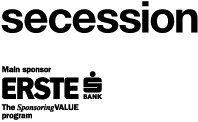Stolberggasse
April 30–June 21, 2020
Friedrichstraße 12
1010 Vienna
Austria
Hours: Tuesday–Sunday 10am–6pm
T +43 1 587530710
F +43 1 587530734
presse@secession.at
Live stream: www.secession.at/en/exhibition/sophie-thun
From April 30 until June 21, 2020, the Secession presents Stolberggasse, an exhibition by the Vienna-based artist Sophie Thun. Conceived specifically for digital dissemination, the show can be seen as a live transmission on the Secession’s website.
The dialectical interrelations between the scene of production and the work’s presentation, between the setting of the artist’s labor and the physical presence of the body, are recurrent themes in Sophie Thun’s photographic oeuvre. The places where she exhibits her work often serve her as points of departure for photographs that show how her body imprints its presence on them. For her exhibition at the Secession, Thun further developed this approach and adapted it to the necessity of digital dissemination. The artist sets up her darkroom in the exhibition space, where, working in isolation, she makes photograms of all objects in her apartment in Vienna’s Stolberggasse. The inventory of things she arranges on the photosensitive plates ranges from toothbrushes and kitchen utensils to books, from tools and paper clips to scrunchies. The only disqualifier is an object’s size: to match the medium, it must not exceed the 8 x 10″ of a large-format negative.
Additionally, Thun revisits her playful engagement with the interfaces between living space and production site, between private and public spaces, by reproducing the worn walls of the stairwell at her home on Stolberggasse with their old-fashioned stenciled paint pattern and presenting a photograph of herself on the mezzanine landing.
In addition to the implements of her craft and the steadily growing collection of black-and-white photograms, the installation also includes the multipart color photograph Looking at the Window, Kabinett, a full-scale trompe-l’œil recreation of the window behind it, which was boarded up to plunge the room into perfect darkness. The view from the window, the connection to the outside world, remains an illusion, referring the searching gaze back to the interior. In the picture, it is always the same time of day, the same season, another symbol of stasis that reads both as a nod to the paradigm of photography as a moment frozen in time and as a reference to the current lockdown.
While visitors are barred from physically entering the Secession’s building, surveillance cameras installed in the gallery enable them to watch the action in real time on the website. Crucially, Thun does not only display the fruits of her labor; allowing us to see her at work, she prompts us to reflect on the places, mechanisms, and performances associated with art production, unfolding a multifaceted scrutiny of its processes and prerequisites. For one, on a very concrete level, she showcases the sophisticated technique of analog image-making, which we can watch in the red light of the darkroom from the moment of exposure of the individual objects under the enlarger to the development of the black-and-white baryta prints.
No less importantly, her body and its actions repeatedly become motifs of image-making, figuring both in the online video feed and in the contact prints, where the artist’s hands holding the objects in place emerge as white silhouettes. In light of the virtually complete isolation from each other imposed by the authorities as part of the measures against the coronavirus pandemic, Thun’s transferring her project into the digital realm also raises questions concerning the complex interplay between self-motivation, heteronomy, and surveillance. Given that someone may be observing the exhibition space at any time, those phases when the artist is not within the camera’s field of view and appears to be doing nothing take on equal importance: there is no telling whether they are to be interpreted as well-deserved time off, laziness, or productive idling.
Sophie Thun was born in 1985 and lives and works in Vienna.
An artist’s book is published in conjunction with the exhibition.
The exhibition program is conceived by the board of the Secession.
The Secession remains closed until mid-June. The exhibition Sophie Thun. Stolberggasse can be visited via live stream on www.secession.at/en/exhibition/sophie-thun.

